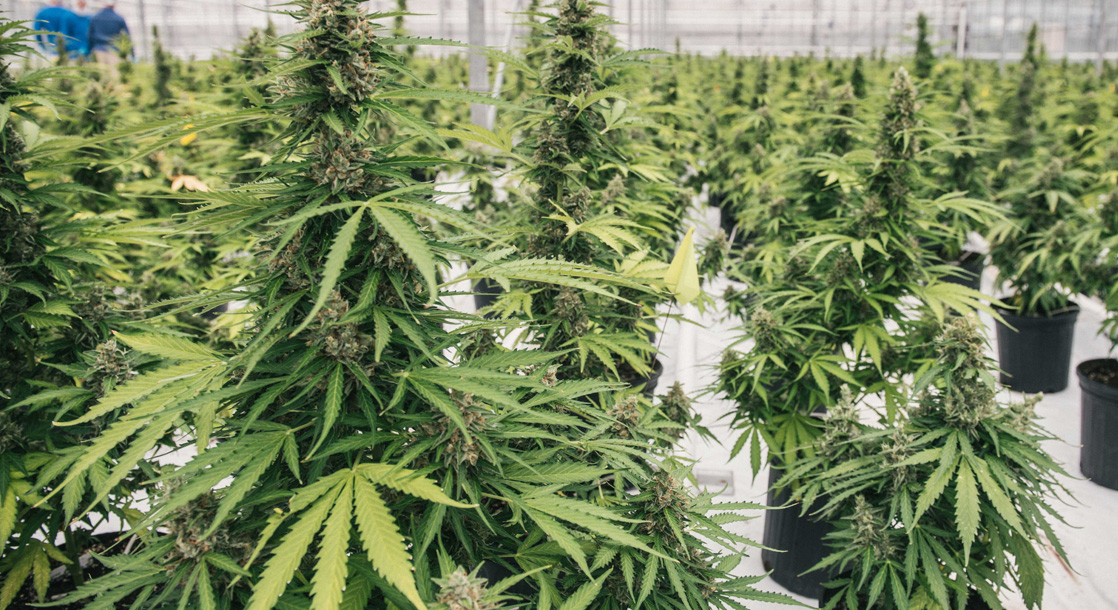Slowly but surely, medicinal use of cannabis is becoming more widely acceptable across the United States and the world, while states like Colorado and Washington are filling to the brim with luscious and towering grow operations.
We’ve certainly seen the potential revenue from this expansive industry, but unfortunately, not everything about the marijuana business is good and green. One aspect that has yet to be overcome is energy consumption, which according to a multitude of sources, is leading to an alarmingly large energy footprint.
According to John Kagia, the Director of Industry Analytics for the Washington DC-based cannabis industry consulting firm New Frontier, every kilogram of cultivated marijuana leads to about 4.3 tons of carbon dioxide.
To put that in perspective for you, that equates to about seven cross-country road trips in your standard vehicle. Grow operations within the United States consume about $6 billion a year in energy, ultimately taking up one percent of the country’s entire energy usage.
So, for all of the benefits that marijuana has brought upon for select economies and medical uses, there’s a glaring issue with the energy footprint left behind from this miraculous plant, and it’s one that certainly is in need of a solution.

First and foremost, those in the marijuana industry must be made fully aware of the impact that these grow operations have on the U.S. energy footprint. If growers don’t start taking action to make their operations more energy efficient and greener, the long term implications could serve to slow down the expansion of the industry.
The impact on energy is no secret to cannabis experts, and the most prominent cannabis cultivation states are already taking action to raise awareness and lower energy use. Let’s take a quick look at some of the solutions that are being initiated by Colorado, Washington, Oregon, and California, all of whom are searching for solutions to this potentially detrimental issue.
Colorado
In Colorado, which is one of the most profitable of all the marijuana growing states, the massive influx of grow operations has also taken a toll on their energy resources, a hefty portion of which comes from their coal-fired power plants. To combat this energy usage, Boulder county has started an initiative that requires commercial cannabis growers to offset their electricity use with renewable energy or pay a 2c charge per kWh. These fees will go to the Boulder-based Energy Impact Offset Fund, which aims to educate and supply cannabis cultivators with energy monitors and other solutions.
One Colorado-based company, named Boulderlamp, is now offering the 315W CDL Agro grow light, which uses half the wattage of a standard grow lamp. According to the company, replacing one standard 1,000W high-pressure sodium lamp with two 315W CDLs, growers can increase production by approximately 25% while saving up to 45% on energy usage.

Washington
In Washington state, one of the biggest advocates for greener marijuana cultivation is Solstice, a locally based cannabis grower. After joining with public utility Seattle City Light’s incentivized program for energy efficiency, the grow operation was offered a six-figure rebate if they utilized 100 LED lights for their operation. Not only will the program help the energy company’s infrastructure, but Solstice itself will save about 50% on energy use. The Washington-based growers currently use 1,000W high intensity discharge lamps (HID), which compare to LEDs for the vegetative phase when roots and leaves of the cannabis plant are developed.
Oregon
Growers in the state of Oregon is also taking preemptive measures to slow the roll of cannabis energy consumption. The Energy Trust of Oregon, which works with homeowners and businesses to cut down their energy usage, has claimed that the state’s expanding cannabis industry is starting to take a keen interest in their services. According to the Energy Trust of Oregon’s Adam Bartini, the energy firm has already undertaken a handful of cannabis operation-related projects. The extreme use of energy has taken a major toll on cities like Portland, which had experienced seven different outages due to cannabis production last year. With cash incentives and free technical assistance, the Trust hopes to alleviate the energy usage in Oregon.
California
In the sunny state of California, particularly in Northern California, the best solution may be to look outside of the grow house into the great outdoors. According to the aforementioned New Frontier study, the growing climate in the northern portion of California is ideal for an outdoor operation. Although both indoor and outdoor growing are said to come with their own set of ups and downs, growing cannabis outdoors or in greenhouses, which utilizes the free and mighty sunlight, can reduce electricity costs by up to 90 percent.
What’s standing in the way?
Unfortunately, there are some obstacles that will need to be overcome to make the marijuana industry truly energy efficient. It seems that two particular hurdles are preventing the green shift from happening faster. First and foremost, growers are extremely hesitant to change their lighting source because it will essentially change the recipe for their crops. In an industry where every crop cycle can make or break your cannabis business, it’s understandable why cannabis producers would rather stick with what works, rather than create a new formulation with more energy efficient lighting.
Another dilemma, which is noticeably becoming less of an issue, is the black market feeling that cannabis business owners still get about their business. Both the marijuana and energy have been slightly reluctant to work together towards energy efficient practices, ultimately because of the stigma placed upon cannabis by the federal government. Luckily, energy firms in states like Oregon and Colorado are finally taking the initiative to make cultivation of the beloved green even greener.











